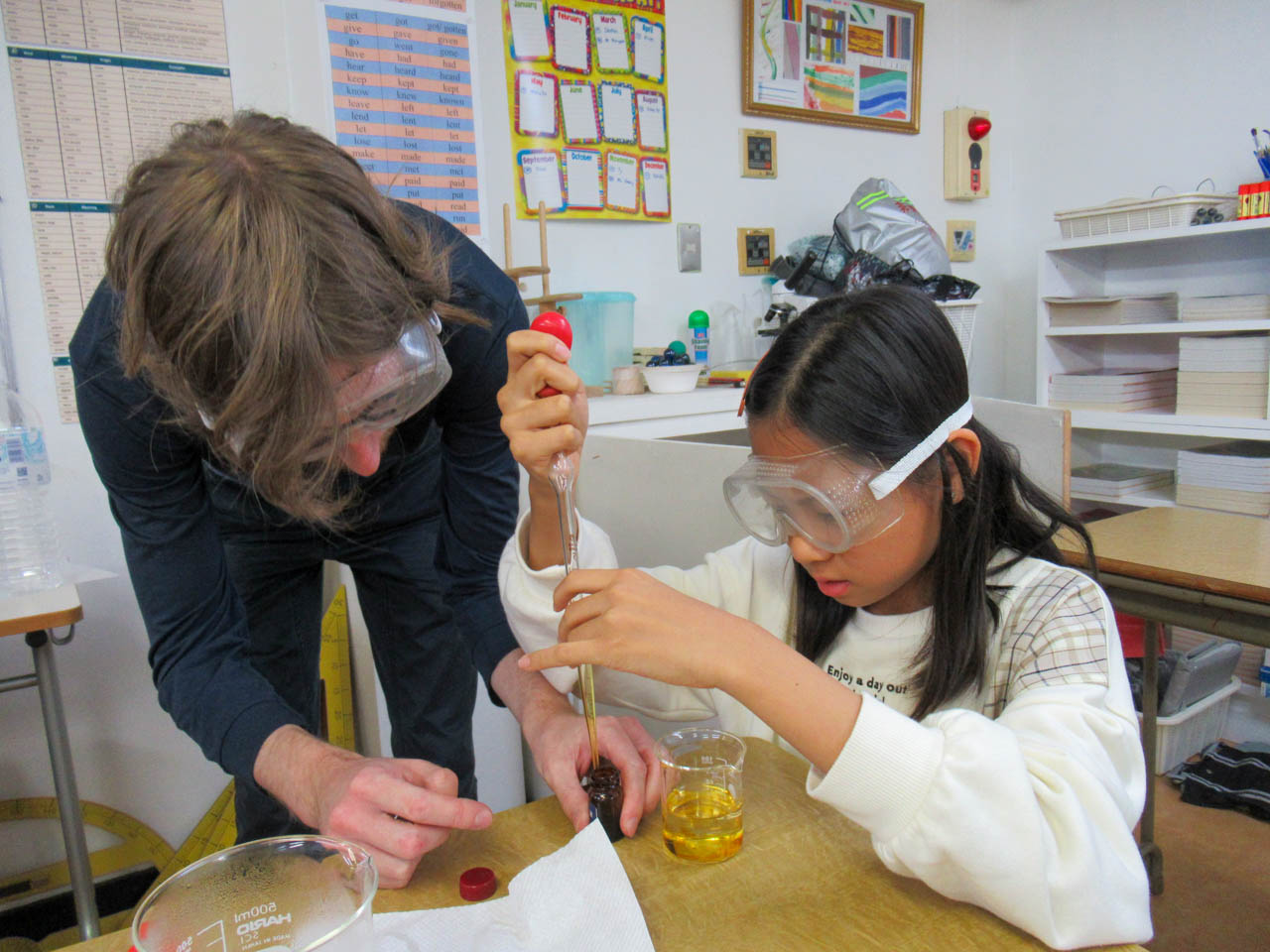Science that matters!
The fifth and sixth graders just finished learning about the digestive system. They learned that the food they eat is digested both mechanically and chemically. The idea of mechanical digestion is fairly simple for the students to grasp because it is something they can actually see, but the chemical digestion is a difficult concept to understand. To help them understand what happens in their bodies, we conducted a rather complicated experiment in class.
Experiment
First, we extracted starch from potatoes using a rather simple technique (we peeled the potatoes, we grated them, we washed what we had in a container and after some rest the starch had collected at the bottom. We drained the water out and let the starch dry to have it in a powder form).
Next, we prepared a starch solution by mixing 200ml of water and 2g of starch. We used a burner to help dissolve the starch and let the solution rest.
We used iodine (orangish) to test for the presence of starch in our starch solution, and the iodine turned blue, proving that starch was here. Heating up the solution didn’t change anything.
A bit of saliva was added to the dark blue starch solution and after about a minute on the burner, the solution turned clear. Adding iodine didn’t make the solution turn blue anymore, meaning that starch was gone.
We then poured a few drops of Benedict solution (light blue) to test for the presence of glucose in our now clear solution, and the solution turned light blue. After a couple of minutes on the burner, the solution turned dark orange, showing that glucose was in the solution.
We did a few other tests (Benedict solution in starch solution without saliva, Benedict solution in water, iodine in water) to make sure of our results.
Our conclusion from the experiment is that our saliva contains something (an enzyme called amylase) that turns starch (that our body cannot use) into glucose (that our body can use).
Wonderful science!


